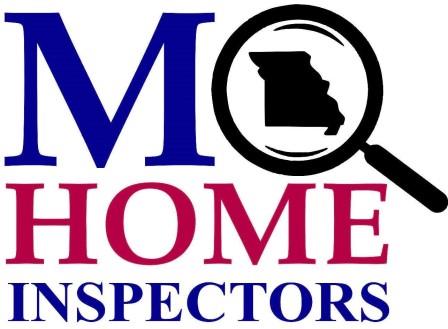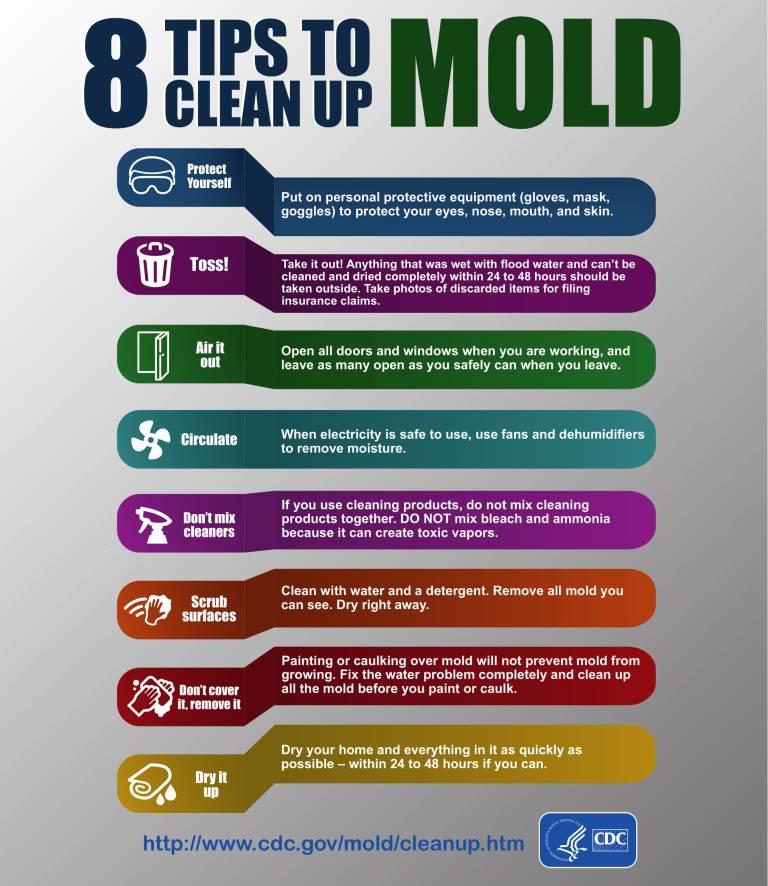Tips and Techniques
The tips and techniques presented in this section will help you clean up your mold problem.
Professional cleaners or remediators will use more methods not covered here. It is recommended if anybody experiencing chronic symptoms do not attempt to cleanup the mold themselves. Please note that mold may cause staining and cosmetic damage. It may not be possible to clean an item so that its original appearance is restored.
- Fix plumbing leaks and other water problems as soon as possible. Dry all items completely.
- Scrub mold off hard surfaces with detergent and water, and dry completely. Absorbent or porous materials, such as ceiling tiles and carpet, will have to be thrown away if they become moldy. Mold can grow on or fill in the empty spaces and crevices of porous materials, so the mold may be difficult or impossible to remove completely, so consider disposing all porous materials.
- Avoid exposing yourself or others to mold.
- Do not paint or caulk moldy surfaces. Clean up the mold and dry the surfaces before painting. Paint applied over moldy surfaces is likely to peel. If you are unsure about how to clean an item, or if the item is expensive or of sentimental value, you may wish to consult a mold remediator. or a specialist. Specialists in furniture repair and restoration, painting and art restoration and conservation, carpet and rug cleaning, water damage, and fire or water restoration are commonly listed online. Be sure to ask for and check references. Look for specialists who are affiliated with professional organizations.
What to Wear When Cleaning Moldy Areas:
- Avoid breathing in mold or mold spores. In order to limit your exposure to airborne mold, you may want to wear an N-95 respirator, available at many hardware stores and from companies that advertise on the Internet. (They cost about $12 to $25.) Some N-95 respirators resemble a paper dust mask with a nozzle on the front, and others are made primarily of plastic or rubber and have removable cartridges that trap and prevent most of the mold spores from entering. In order to be effective, the respirator or mask must fit properly, so carefully follow the instructions supplied with the respirator. Please note that the Occupational Safety and Health Administration (OSHA) requires that respirators fit properly (via fit testing) when used in an occupational setting.
- Wear gloves. Long gloves that extend to the middle of the forearm are recommended. When working with water and a mild detergent, ordinary household rubber gloves may be used. If you are using a disinfectant, a biocide such as chlorine bleach, or a strong cleaning solution, you should select gloves made from natural rubber, neoprene, nitrile, polyurethane or PVC. Avoid touching mold or moldy items with your bare hands.
- Wear goggles. Goggles that do not have ventilation holes are recommended. Avoid getting mold or mold spores in your eyes.
How do I know when the remediation or cleanup is finished?
- You must have completely fixed the water or moisture problem before the cleanup or remediation can be considered finished, based on the following guidelines:
- You should have completed the mold removal. Visible mold and moldy odors should not be present. Please note that mold may cause staining and cosmetic damage.
- You should have revisited the site(s) shortly after cleanup, and it should show no signs of water damage or mold growth.
- People should have been able to occupy or re-occupy the area without health complaints or physical symptoms.
If any these factors persist, a mold asessor should be consulted.
Cleanup and Biocides
Biocides are substances that can destroy living organisms. The use of a chemical or biocide that kills organisms such as mold (chlorine bleach, for example) is not recommended as a routine practice during mold cleanup. There may be instances, however, when professional judgment may indicate its use (for example, when immune-compromised individuals are present). In most cases, it is not possible or desirable to sterilize an area; a low background level of light mycotoxin containing mold spores will remain, and these spores will not grow if the moisture problem has been resolved.
If you choose to use disinfectants or biocides, always ventilate the area and exhaust the air to the outdoors. Never mix chlorine bleach with other cleaning solutions or detergents that contain ammonia because toxic fumes could be produced.
Please note: Dead mold may still cause allergic reactions in some people, so it is not enough to simply kill the mold; it must also be removed. Clearance air testing should be performed to determine if the mold spore levels are at a considered safe level after the mold cleanup is completed. Testing should be performed by the use of a nationally recognized testing standard.

